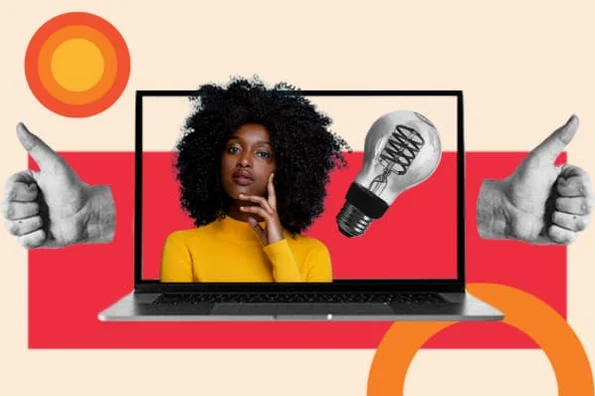In an era where content creation, sharing, and consumption are at an all-time high, videos have become one of the most popular forms of communication and entertainment. From personal vlogs to educational content, and from professional tutorials to entertainment, videos are being uploaded, viewed, and shared across a multitude of platforms every day. However, not all videos are intended for public viewing. In fact, many users prefer to keep certain videos private for reasons ranging from personal privacy to content protection. This is where private videos come into play.
Private videos are typically videos that are not publicly accessible to everyone. Whether you’re uploading a video on a social platform, sharing content with specific people, or storing personal footage in a secure cloud service, private videos play an essential role in maintaining the confidentiality and security of digital media. This article explores the concept of private videos, their importance, how they can be used, and the tools and settings that allow users to keep their videos secure in an ever-connected world.
What Are Private Videos?
A private video is a video that is restricted or limited in its access, ensuring that only specific individuals or groups can view it. Unlike public videos, which are available for anyone to watch, private videos require a level of access control. This could mean that the video is hidden from search results, is accessible only via a direct link, or requires a password or permission from the video uploader to be viewed. https://xvids.click/xviodes/
Key Characteristics of Private Videos:
- Access Control: Only authorized individuals, groups, or accounts can view the video.
- No Public Sharing: The video cannot be publicly searched or discovered through general browsing on the platform.
- Privacy Settings: The video can be password-protected, shared via a link, or visible to specific users or friends, depending on the platform’s settings.
- Limited Sharing: Some platforms may allow users to share private videos with specific people (for example, through private links) but not share them on social media.
Private videos are useful for a variety of scenarios, from personal use to professional applications, allowing users to maintain control over their content.
Why Are Private Videos Important?
1. Personal Privacy
Many individuals prefer to keep personal videos—such as family moments, vacation clips, or private celebrations—out of the public eye. Videos can be a window into personal life, and people may not want strangers or the general public to access such intimate content. Platforms like YouTube, Vimeo, and social media sites offer private video settings to protect personal privacy.
2. Business and Professional Use
For businesses, private videos can be essential for internal communications, training materials, or sharing confidential content with clients. Instead of making business-related videos available to the public, businesses use privacy settings to restrict access to only authorized employees or clients.
3. Content Protection
Video creators, including artists, educators, and influencers, may wish to restrict access to their videos to prevent unauthorized distribution or copyright infringement. By setting videos to “private,” creators can ensure that their content is only shared with a select audience and isn’t pirated or copied without permission.
4. Selective Sharing
Private videos allow users to share content with a specific group of people, such as friends or family, without exposing it to the public. This feature is particularly useful for people who wish to share personal experiences, such as family events or personal updates, in a controlled and secure manner.
Platforms That Allow Private Video Uploads
Several online platforms provide the ability to upload private videos. These platforms offer different levels of privacy, including features like password protection, private sharing links, and access controls. Here are some of the most common platforms for uploading and sharing private videos:
1. YouTube
YouTube is one of the most popular video-sharing platforms globally, with billions of videos uploaded daily. YouTube offers the option to upload videos as “Private,” “Unlisted,” or “Public.”
- Private Videos: These videos can only be viewed by users who are specifically invited by the uploader. They will not show up in search results or on the uploader’s channel.
- Unlisted Videos: While these videos won’t appear in search results, anyone with the direct link can view them. This option is useful for sharing videos with a limited audience without fully restricting access.
How to Set a YouTube Video to Private:
- When uploading a video, select the Privacy setting and choose Private.
- You can then select the specific YouTube accounts you want to share the video with.
2. Vimeo
Vimeo is known for its high-quality video hosting and is often used by creators, professionals, and businesses. It allows users to upload videos as private or password-protected. Vimeo’s privacy settings are robust, providing the flexibility to restrict access to specific viewers or to require a password for viewing.
How to Set a Vimeo Video to Private:
- When uploading a video, you can choose Privacy settings under the video’s options.
- You can set the video to “Only me,” which keeps it entirely private, or share it with selected people via password protection or specific URLs.
3. Google Drive
Google Drive allows users to upload and store videos privately. By default, videos uploaded to Google Drive are private to the account that uploaded them. However, users can choose to share videos with specific people, or even create a shareable link for limited access.
How to Set a Google Drive Video to Private:
- When uploading a video to Google Drive, right-click on the file and select Share.
- You can choose to restrict access to specific email addresses or share the video with a link that requires permissions.
4. Dropbox
Dropbox is another cloud storage service that allows users to store and share private videos. By setting up shared folders or using password-protected links, users can control who sees their videos.
How to Set a Dropbox Video to Private:
- After uploading, right-click on the video file, select Share, and choose the privacy settings you prefer. You can invite people by email or generate a private link with a password for additional security.
5. Facebook
Facebook allows users to upload videos to their profiles or pages. Users can control the privacy of their posts, including videos, by selecting who can see them (e.g., Public, Friends, or Custom groups).
How to Set a Facebook Video to Private:
- When posting a video, select the privacy options and choose Only Me or a custom audience to ensure the video is kept private.
How to Keep Your Private Videos Secure
While the platforms mentioned above offer privacy settings for videos, it’s still important to take additional steps to protect your content. Here are a few tips to enhance the security of your private videos:
1. Use Password Protection
Some platforms, like Vimeo and Google Drive, allow you to set up password protection for videos. This ensures that only people with the password can view the content. This is particularly useful for sensitive content or when sharing videos with a very specific group of people.
2. Limit Sharing and Permissions
Only share private videos with trusted individuals. Be mindful of who you share links or access with, especially when using platforms that generate shareable links (e.g., YouTube unlisted videos). Always check permissions and ensure that the settings are correct before sharing.
3. Use Encrypted Storage Services
For the highest level of security, consider using encrypted storage services that offer additional protection against unauthorized access. Encrypted services, like Tresorit or pCloud, provide secure video storage and allow only authorized individuals to access the content.
4. Monitor Access
If possible, track who has accessed your private videos. Some platforms offer access logs or analytics, which can help you monitor who is viewing your content and ensure that only the intended audience has access.
5. Update Privacy Settings Regularly
Make sure your privacy settings are up to date, particularly if you make any changes to the content or sharing preferences. Platforms may occasionally update their security policies, so it’s important to revisit privacy settings periodically to ensure your videos remain private.
Conclusion
Private videos offer a secure and controlled way to share content with select individuals or groups while maintaining control over your personal or professional information. Whether you’re using platforms like YouTube, Vimeo, or Google Drive, understanding the privacy options available is essential to protecting your videos. By using strong security measures, such as password protection, limiting access, and choosing trusted platforms, you can enjoy peace of mind knowing that your private videos are safe from unauthorized access. In a world where digital content is constantly being shared and consumed, the ability to keep certain videos private ensures that your personal or sensitive content remains just that—private.








